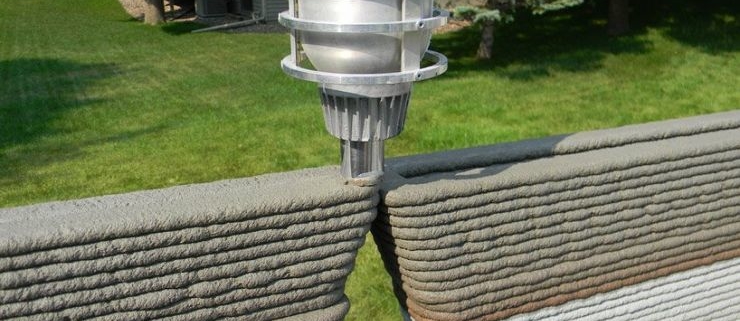3D printing
Today, the construction industry faces two challenges. On the one hand, we are intentionally moving towards a more sustainable world, so there is a demand for such infrastructure. On the other hand, there is the need to repair dilapidated buildings, bridges and roads.
When we think of these problems, the first solution that comes to mind is to use concrete. However, it is a material that leaves a significant carbon footprint on the environment and cannot be recycled. According to the International Energy Agency (IEA), concrete is responsible for approximately 7% of carbon dioxide emissions.
A team of researchers at Texas A&M University used this data as the basis for investigating a new green technology. Their research focuses on designing a sustainable building material made from local soil, using 3D printing to create load-bearing structures.
Two examples:
- In 2018 in Spain, a first pilot in-situ housing model was created with a 3D printer; this was a 24 square metre building designed by a team made up of members of the Fine Arts Faculty of the Polytechnic University of Valencia and the Valencian company Be More 3D.
- The robot construction company Apis Cor developed a gypsum-based material – which was sourced from a local producer – to build the world’s largest 3D printed building, a two-storey office in Dubai.
Will we be willing to give up highly used materials to change our buildings for other materials with other kinds of resistance?




